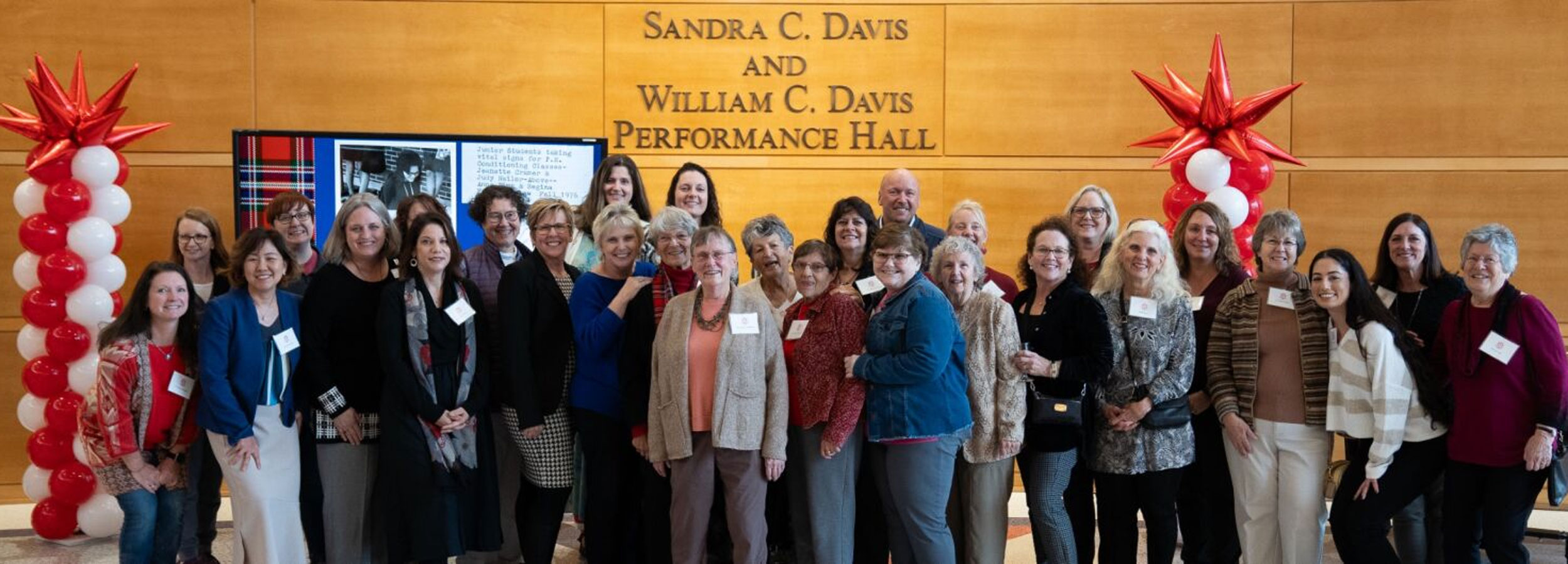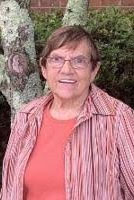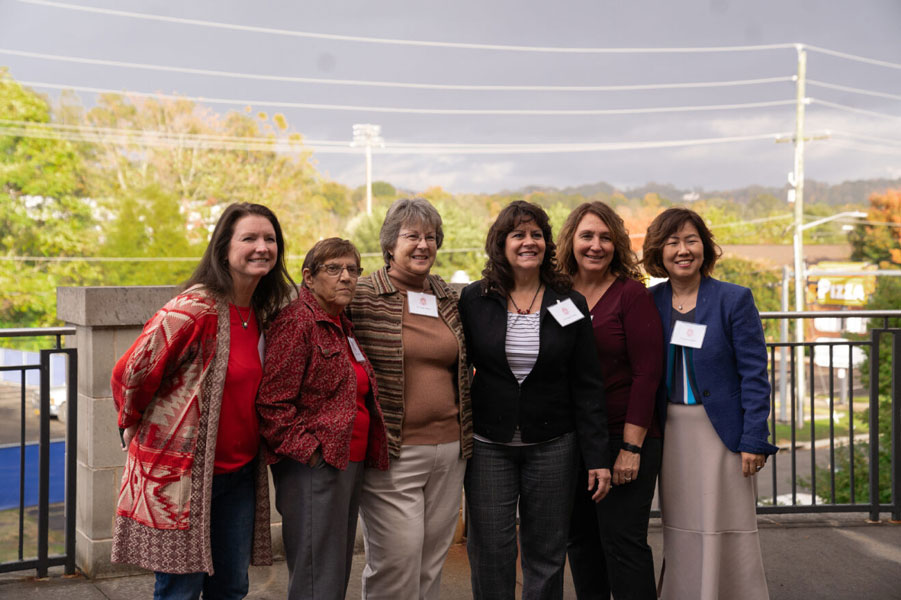A life of purpose: Virginia ‘Ginger’ Burggraf’s legacy in geriatric nursing and education
May 19, 2025

If you ask Virginia “Ginger” Burggraf what set her life in motion, she will say it began with her grandparents.
Growing up in a multigenerational home, Burggraf was deeply influenced by her grandparents, who lived with her family. As a young girl, she observed firsthand the challenges and grace of aging and the ways healthcare could either support or fail those in their later years. It was a seed planted early – one that would grow into a groundbreaking career in geriatric nursing and education.
This May, during National Nurses Month, Radford University reflects on its legacy of nursing excellence and is proud to honor Burggraf, whose impact stretches far beyond the walls of Waldron Hall. As a nurse, educator, researcher, policy analyst and trailblazer, Burggraf’s influence on gerontological nursing has been nothing short of transformational.
“I’ve gone through my whole life doing what came naturally. I never realized what I was doing was anything unusual. I never thought of myself as visionary,” said Burggraf. “My greatest achievements in nursing were at the bedside. My greatest contribution to geriatric care was teaching.”
From humble beginnings to Ivy League hallways

Burggraf’s journey into nursing was forged with grit and determination. Raised in a modest household by immigrant parents who emphasized the importance of education, she graduated from high school in 1959. At that time, few schools offered baccalaureate degrees in nursing and even fewer specialized in areas like geriatrics.
She began her academic path at Cornell University, earning her undergraduate degree in nursing at a time when it was still uncommon for nurses to hold BSNs. After marrying during nursing school ֪– balancing married life, clinical hours and the birth of her first child just days before graduation – she went on to pursue a master’s degree in nursing and ultimately secured her Doctor of Nursing Science degree. Burggraf’s education was possible because of national government funding during a time when the country was beginning to reckon with an aging population.
In the 1960s and 70s, as life expectancy rose and chronic illness became a national concern, Burggraf saw an unmet need: specialized care for older adults. But when she looked for a curriculum in gerontological nursing, there wasn’t one.
Writing the textbook – literally
After moving to Louisiana for her husband’s career, Burggraf became an educator for the nursing program at Louisiana State University (LSU), only to discover that geriatric nursing didn’t exist as a formal focus – because no textbooks had been written.
“I went to the dean at LSU and explained there were no instructional materials. There were no textbooks. She said, ‘Then write one,’ so I did,” said Burggraf. “You know, I had an English teacher in school who told me it was a good thing I was going to be a nurse because my writing was not going to amount to anything. I dedicated my first book to her.”
With characteristic resolve, Burggraf wrote the textbook, laying the groundwork for what would become – and still is – the model curriculum in a then-emerging field.
Burggraf continued her doctoral work while being employed full-time by the American Nurses Association (ANA), where she began grant writing and became a trusted policy analyst on Capitol Hill.
“The ANA was moving to D.C. from Missouri, and the staff member who focused on pediatrics at the ANA didn’t want to relocate. So, I took on pediatrics and geriatrics,” said Burggraf.
This was during the Carter Administration, and while in the role, she authored a successful grant that funded childhood vaccination programs in all 50 states. She was even invited to the Georgia home of President Jimmy Carter and First Lady Rosalynn Carter to discuss the program. “The FBI picked me up, and President Carter served me coffee,” said Burggraf. That initiative became a pivotal part of the “Every Child by Two” campaign in the early 1990s, helping to reverse a troubling rise in measles outbreaks.
While she always blazed a trail, Burggraf’s path wasn’t linear. Life presented personal challenges, including the sudden loss of her husband Tom in 1985. Still, she pressed on with clarity of purpose, raising her family – six children in total, two of whom sadly passed away – and mentoring generations of nurses along the way.
Sarah Gilbert '80, M.S. '05, was a student first, then a colleague, and now a lifelong friend of Burggraf’s. “The support Ginger gave to everyone was positive and uplifting,” said Gilbert, who went on to earn a Ph.D. “Don’t get me wrong – she could be sharp-tongued at times – but I wouldn’t be here and wouldn’t be the nurse I am without her!”
Answering the call to teach
In the early 2000s, Burggraf received a call from Radford University. “Where is Radford?” she asked. She had been working for the ANA and living in Washington, D.C., deeply entrenched in policy and education efforts. But Radford had a need: a growing School of Nursing looking to elevate its program and build strength in the field of geriatric nursing.
They needed Burggraf.
With Radford pinpointed on a map and a little salary negotiation, Burggraf joined Radford University in 2001, spending the next 18 years building the gerontological nursing program and transforming the research. She held the Marcella J. Griggs Distinguished Professorship in Gerontological Nursing, the first endowed chair in the School of Nursing’s history. Under her leadership, Radford became a beacon for those entering nursing – many of whom developed a passion for elder care – all the while equipping students with the tools to lead not just in hospitals and clinics, but in policy and research as well.
Burggraf inspired her students to ask difficult questions and seek broader horizons: how can nurses shape public health? What does compassionate, person-centered care look like at the end of life? How do we prepare for a future where one in five Americans will be over 65 years old? One of the tools she taught with and advocated for was “The Five Wishes,” a document outlining end-of-life preferences that encourage dignity and dialogue. Her passion for giving elders a voice was always at the heart of her work.
A legacy written in ink – and solidified by action
During her prolific career, Burggraf published more than 55 peer-reviewed journal articles, authored or co-authored five textbooks and gave more than 60 professional presentations. She also wrote more than 120 newspaper articles – accessible, informative pieces that educated the public on critical issues like aging, chronic disease and end-of-life care. Burggraf’s professional collection offers a rich archive of policy papers, research and advocacy that reflects decades of dedication to elevating elder care.
Her dedicated and exceptional grant writing during her 18-year career at Radford University brought in more than $3 million in grants and research funding. She was active in at least 18 professional organizations related to nursing and geriatrics, and she remained a tireless mentor to students and colleagues alike. Even today, she is revered by those whose lives she forever changed.
“I feel very privileged to have had Dr. Burggraf as a professor when I attended Radford University for my Family Nurse Practitioner graduate degree,” said Robin Wright ’87, M.S. ’08. “It was wonderful to have a mentor who was so accomplished. She has a true passion for the aging population. I learned so much from her that I was able to take that knowledge into practice with me. Ginger is a kind, generous, intelligent, funny and overall wonderful lady – a real asset to the nursing profession. I am an overall better person and nurse for having her as a professor and will be forever grateful to her!”
“Dr. Ginger Burggraf has left an indelible mark not only on the field of nursing but also on my personal and professional journey,” said Marjorie Young ’85, D.N.P. ’15, MSN ’24. “Her contributions to nursing education, leadership and innovation are widely recognized, but it’s her role as a mentor, advisor and colleague that I hold closest to my heart,” added Young, who currently serves as chair of the Radford University Department of Graduate Nursing. “Ginger’s passion for nursing education was contagious, and it lit a spark in me that eventually led me to pursue a career in academia.
“As a new faculty member, I leaned heavily on her mentorship. Working together on a grant proposal was a full-circle moment; what began as a student-teacher relationship evolved into a meaningful professional collaboration. Ginger’s influence helped shape the educator, mentor and scholar I strive to be today. I am forever grateful for her example, her encouragement and her unwavering belief in my potential. Her legacy continues through all of us she’s mentored and through every student, project and idea she inspired.”
A family of nurses

Today, Burggraf is 83 and still resides in Radford. “My life in geriatric nursing was here, in Radford,” said Burggraf. “I’ve lived here longer than anywhere else.” She is a proud member of St. Jude Catholic Church, still visits with former colleagues and students and is involved with the NRV Agency on Aging.
Nursing, for her, has always been about people, and it’s no surprise that her family reflects that same calling. Two of her children became nurses. Two of her granddaughters are also nurses.
She’s fond of saying that nursing was her “only choice” – not because she lacked options, but because her heart was always called to serve. “I just did what came naturally. It was normal to me,” said Burggraf.
Burggraf’s career and contributions span the evolution of nursing itself: from diploma-based hospital training in the 1950s to doctoral research and health policy leadership in the 2000s. She’s witnessed and helped shape how the profession has matured, adapted and risen to meet new challenges.
Whether she was working with the American Nurses Association, teaching future nurse leaders at Radford, standing in front of lawmakers advocating for the elderly or sipping coffee with the Carters, Burggraf demonstrated that nurses aren’t just caregivers –they’re changemakers.
Honoring a giant in geriatric nursing
As National Nurses Month shines a spotlight on the profession’s heroes, Radford University is proud to honor Virginia “Ginger” Burggraf. Her legacy is woven into the very fabric of the Radford University College of Nursing and lives on through every student she mentored, every program she built, and every life she touched.
Her story is a reminder that sometimes the biggest changes come from those who quietly rewrite the rules – who see what’s missing and choose to build it themselves.